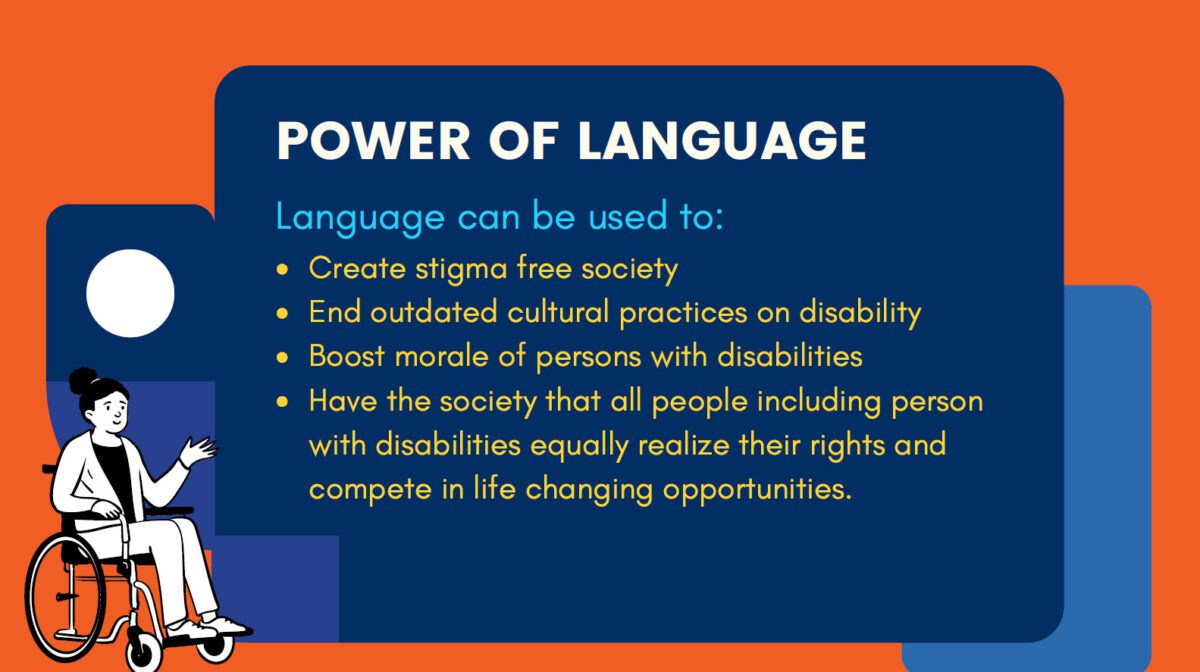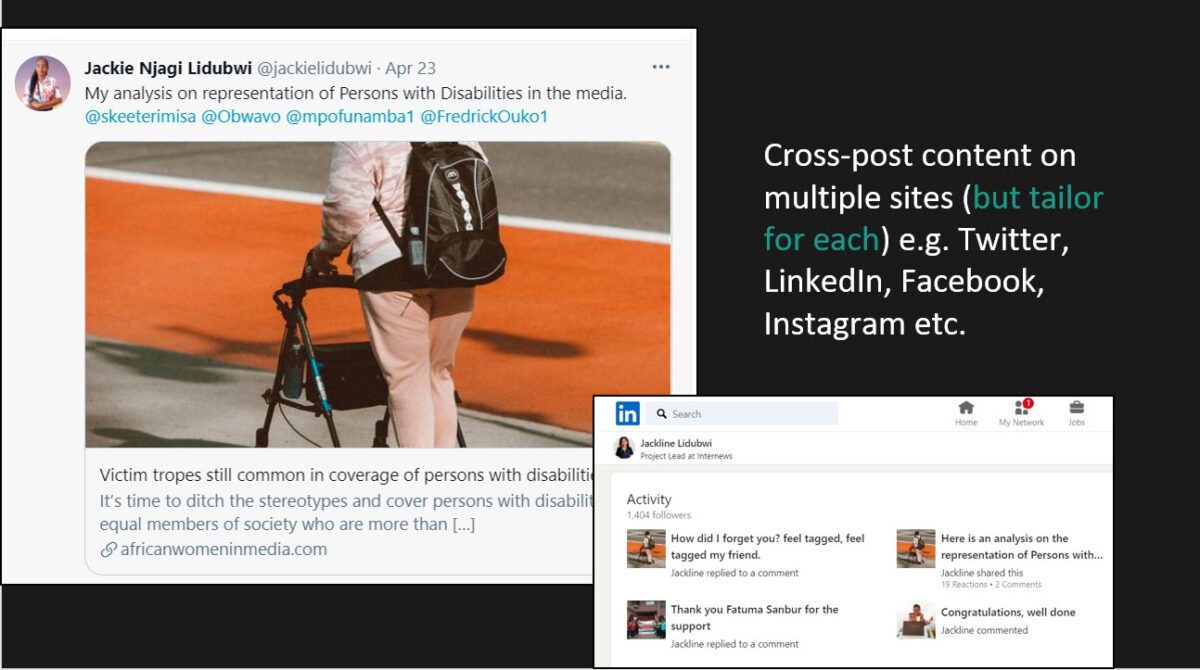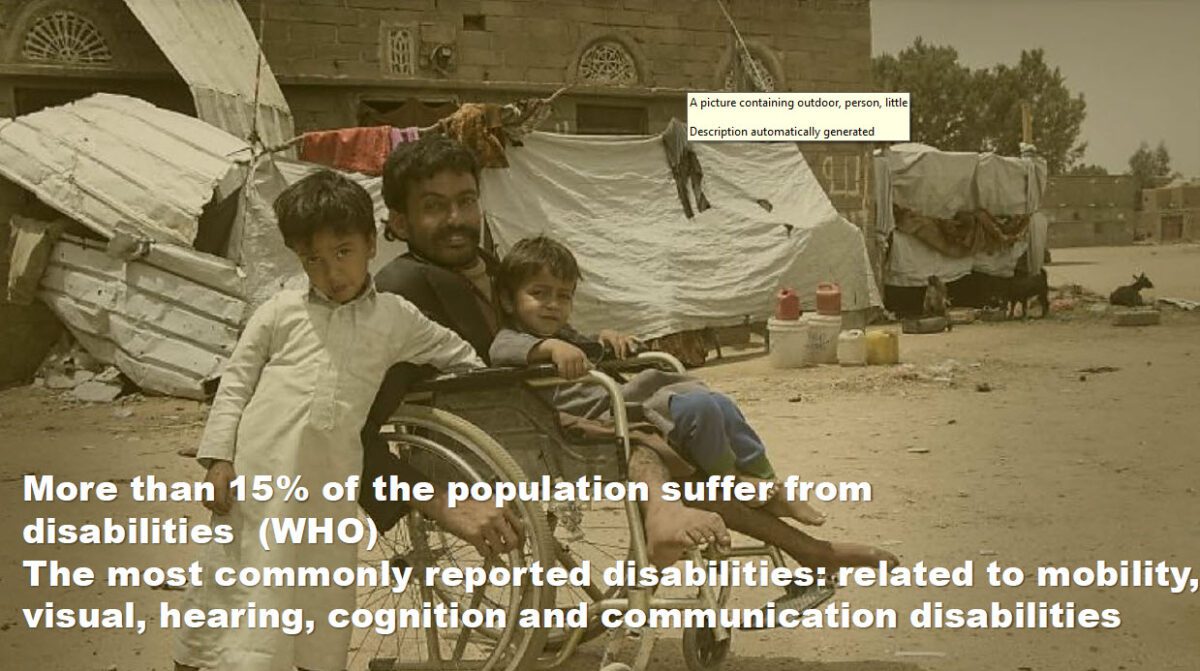Second disability reporting webinar round-up: Disability terminology, Do’s and Don’ts – by Kathryn Cleary
Building on the knowledge and insights from the first of three webinars on reporting on disability, the second webinar in this series focussed on terminology, the “do’s and don’ts” of language when reporting on disability, as well as the powerful role of social media when sharing stories and content about disability.
In the first webinar, we heard from Jackie Lidubwi, Internews Inclusive Media Project Manager based in Kenya. On the 3rd of June, Lidubwi joined us again for this second session, and spoiler alert, will also be present at the third and final webinar. For this second session, Lidubwi was joined by Daris Al-Badaani, Director of the Media Centre for Disabled Persons in Yemen and Professor John Obwavo Ndavula, a social media lecturer at the Muranga University of Technology in Kenya.
“The language that you use will show how much you respect persons with disabilities, and their rights,” says Lidubwi. Language shows respect but can also practice discrimination, disvalue people and show your perceptions towards others. Respectful language is key when reporting on persons with disabilities, she emphasizes.

Words Matter
Language is incredibly powerful, and when reporting on persons with disability, language can help to create a stigma free society, put an end to outdated practises on disability, boost the morale of persons with disability, promote a society where all persons equally realise their rights and compete in life changing opportunities.
Addressing persons with disability
Call them by their name and use person-first language, says Lidubwi.
“Avoid using derogatory or stigmatising terms such as ‘albino or mlemavu*,’ in Kiswahili. Ask the person you are speaking to what they would like to be called. This is important because people differ based on their culture, origin and location. Lastly, be sure to address the person with the disability directly, rather than their companion or assistant.”
* (Mlemavu is derogatory kiSwahili slang for a person with disabilities.)

Cheat Sheet: Terminologies in disability reporting
- Person without disability: “Non-disabled” or “does not have a disability”
- Instead of saying ‘afflicted with’ or ‘stricken with’, ‘victim of’, just state THE FACTS, such as, a person with cerebral palsy.
- Never refer to a person with albinism as an “albino,” remember person first terminology, this is similar for persons with autism.
- For blind persons or those who are visually impaired be sure to only use the word “blind” if the person has a complete loss of sight, and “legally blind” when the person has almost complete loss of sight.
- Other commonly used and appropriate terms:
- Limited vision
- Low vision
- Partially sighted
“Your concerted efforts to use positive, non-judgmental, respectful language when referring to people with disabilities in writing and in everyday speaking can go a long way toward helping to change negative stereotypes,” says Lidubwi.
Cheat Sheet: Using social media in disability reporting
- Remember news values: Who, what, when, where, why, how
- Keep it highly visual: How do you want to report it? What will you use? Photos, videos, infographics, cartoons or animations.
- Keep it short: 4 minutes or less (for videos)
- Watch your voice: Are you sounding sad, preachy, condemning, downgrading or upgrading? Be mindful of these things.
- Make your social media post personal and add your voice.
Choose your platform based on your target audience and story-type:
- Instagram- youth and more visual
- Twitter- topical, political and social commentary
- Facebook- family oriented
Food for thought: Did you learn about reporting on disability at your journalism school from people like Professor Ndavula? Let us know in the comments section!
Sharing some insights from the ground in Yemen, Al-Badaani’s media work with persons with disabilities is filling a growing gap, as Yemen’s humanitarian crisis worsens. Al Badaani gave us a glimpse at reporting on disability, in the midst of ongoing conflict.

Yemen’s humanitarian crisis severely impacts the lives of persons with disability in the country, he shares. “Nearly 80 percent or more of the country’s population is in need of humanitarian aid, and more than 13 million persons are reportedly in danger of starving to death.” More than 15 percent of the population are persons with disability, and as a result of ongoing conflict, there are very few organisations left in Yemen to support persons with disability, says Al-Badaani.
Al-Badaani’s Media Center opened in 2019. Most of the Centre’s team are persons with disabilities and they aim to raise awareness and campaign for the rights of people with disabilities. They produce multimedia content, including a radio show, in inclusive languages such as braille and sign language.
* Please note that Al-Badaani presented in Arabic, and English translations were provided by Sahar Mohamed, Internews Media Project Assistant based in Yemen. Listen to the recording of this webinar.